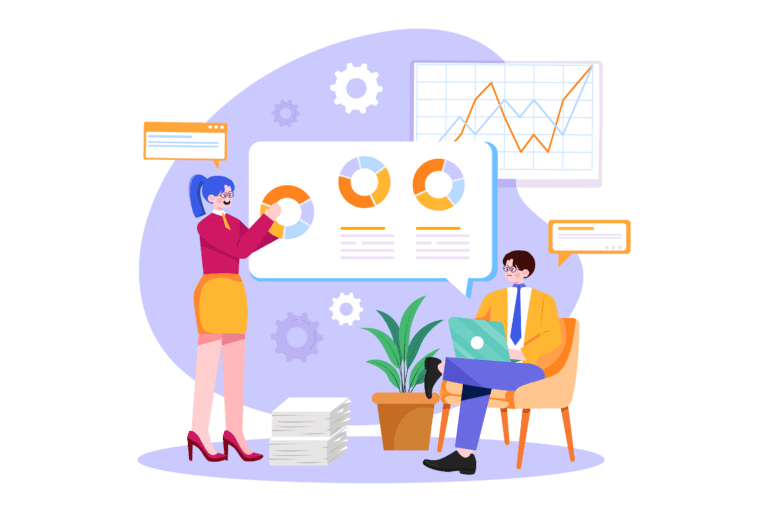Today, feedback reveals that 9 out of 10 customers want an experience with seamless service between communication methods. In such a scenario, the Omnichannel feature is extending the same consistent feel to the customer during his switching between multiple touchpoints. It’s like streamlining customer interactions in a unified way. The CXO circle is increasingly pursuing this with their service providers so that they can effectively offer customers 360° and it is a USP for the Developer world too.
The Online mode is extended from Desktops, Laptops, to tablets & smartphones further, the Omnichannel feature for all channels, platforms, and devices allows businesses to nurture leads more effectively & enhance customer engagements.
The Omnichannel Experience
As the technology upgrades, more enhancements, and spectrum of service points is getting wider. Banks are offering a Multichannel environment such as Digital Branch [man-less], Bank on a Smart Device, Bank on phone, etc. The customer has a choice to transact among all these touchpoints. The omnichannel feature is an enhancement across all touchpoints to make it seamless. Customers should have the liberty to start the onboarding process from one channel and finish it from another channel without repeating the information shared earlier, this is what Omnichannel experience the Banks are offering to their customers.
Tunning Multichannel to Omnichannel
Both Multichannel & Omnichannel are misinterpreted but there is a difference i.e. Integration. While Multichannel in a Banking scenario offers services to its customers through various channels such as in-branch, ATMs, Phone Banking, online banking, and mobile – but all of these work in silos. They don’t necessarily work together in a unified way.
Banks/Financial institutes have already Multiple channels offering entire banking services round the clock, the Omnichannel approach is tunning these touchpoints in a unified way so that customer doesn’t feel any disconnect while switching.
Omnichannel is Customer Focused
Unlike multichannel which is a transaction-based approach, the Omnichannel is a customer-centric approach and focuses on interactions rather than only transactions. Globally, every Organization is focussing & strategizing on the Customer as a center, Omnichannel is a tool to achieve the expected results with customer interactions.
Omnichannel has the customer as their central focus, providing them with a personalized message in a seamless, unified experience. This allows the customer to easily access information from any of the channels since the channels are connected.
According to The Economist, an omnichannel strategy means customers can “shop with smartphones, tablets, laptops and even in stores as if waited upon by a single salesman with an unfailing memory and uncanny intuition about their preferences.” With omnichannel, banks can achieve the ultimate goal of meeting their customers’ specific needs and at the same time, anticipating their wants and likes.
Statistics says 60% of banking customers use digital channels; 80% of customer touchpoints & 25% of Sales occur on Digital
These numbers underline the importance of offering a seamless experience to the customer across all touchpoints. As the competition is getting bitter, nurturing every lead of a prospect instantly and enhancing every interaction of a customer for better stickiness and satisfaction is vital. Enabling Omnichannel to suffice the challenge. One of the European banks that implemented large-scale changes saw sustainable revenue growth of up to 20% over two to three years, indicating that the benefits of optimizing omnichannel capabilities are continuous and significant (courtesy altitude)
Leverage Omnichannel capabilities to optimize operations and maximize Customer Satisfaction
Omnichannel tables 2 key pillars i.e., Integration & Interaction. Integration is support for a choice of channels and the ability to switch from one to another without a disrupted, fragmented journey and Interaction also extends the vital trust aspect of face-to-face, human interaction. It also results in many tangible/intangible benefits such as
- Faster TAT (Turn-Around-Time) – One major advantage of omnichannel banking is that by interacting online, issues can usually be resolved more efficiently and quickly. Incidentally, with pandemic scenarios, customers are enforced to digital channels and now they are realizing and reaping the benefits
- Higher Customer Satisfaction – Omnichannel is about understanding what customers want & like based on analytics, resulting in proactive interactions with the customer for his future needs. By implementing Lead nurturing tools such as CRM which has built-in AI/ML features for predictive analysis triggers the higher conversion ratios and generates likely future interests of the customer.
- Effective Echo System – Banks As the automation extends Banks also need to focus on the human side of the omnichannel model as it is equally important. As mentioned earlier, the adoption of CRM to track and respond to their customer’s needs is a must.
- Personalized Communication – With a faster, more tailored experience, customer satisfaction grows, meaning improved customer loyalty. Customers who get exactly the help they want, are far more likely to stay on board.
Omnichannel is the way forward
There are no two thoughts to it. Implementation of Omnichannel across the touchpoints is a big project as it involves new technical infrastructure with enhanced data capabilities. Data exchanges and seamless integration is a roadmap but many financial institutes have started with defined agenda starting with monitoring and tracking every interaction with a customer. Secondly, Banks are elevating from fulfilling needs to anticipating wants and likes and striving to exceed customers’ expectations. 3 Action points for integration and data exchange to conclude,
- Adoption & Implementation of CRM tool for quick nurturing leads & more productive Sales team
- ERP platform for better back-office and faster TATs
- Analytics tool for behavioural analysis, Predictive Analytics, etc.
Image Source: https://cloudblogs.microsoft.com/
Global iTS is a leading Microsoft Dynamics 365 ERP and CRM Partner, headquartered in the UK. With 300+ clients, successfully proven implementations, an excellent support system by our experienced domain specialist, and a good track record of customer retention. Also, it has a strong foothold and customer base across other GCC countries (Bahrain, Saudi Arabia, Oman, Kuwait, UAE, and Qatar).
Global iTS is mainly into the specialized requirements in Financial Services and Insurance sectors focusing on Digital Transformation journey in Retail Banking, Commercial Banking, Insurance Providers, Private Equity, and Investment Banking by bringing Artificial Intelligence, Machine Learning, Blockchain, and Robotic Process Automation technologies and enhanced their productivity and profitability. We bring in over 15 years of international expertise to digitally transform any aspect of a client’s business.





